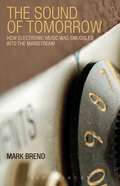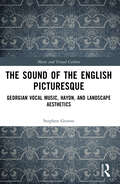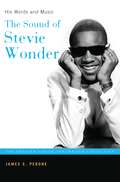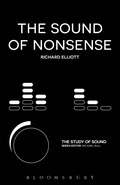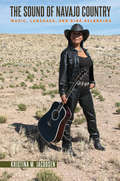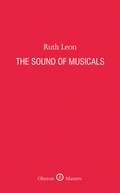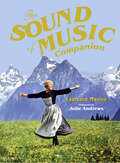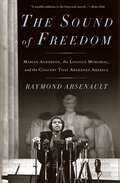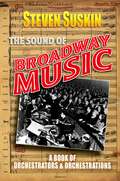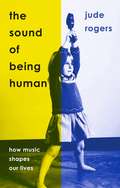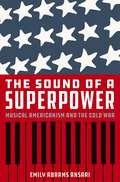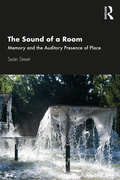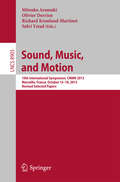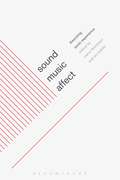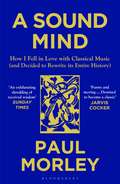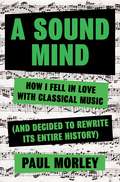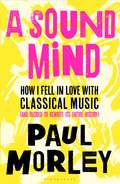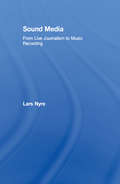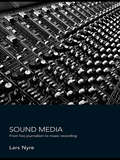- Table View
- List View
The Sound of Tomorrow: How Electronic Music Was Smuggled into the Mainstream
by Mark BrendLondon, 1966: Paul McCartney met a group of three electronic musicians called Unit Delta Plus. McCartney was there because he had become fascinated by electronic music, and wanted to know how it was made. He was one of the first rock musicians to grasp its potential, but even he was notably late to the party. For years, composers and technicians had been making electronic music for film and TV. Hitchcock had commissioned a theremin soundtrack for Spellbound (1945); The Forbidden Planet (1956) featured an entirely electronic score; Delia Derbyshire had created the Dr Who theme in 1963; and by the early 1960s, all you had to do was watch commercial TV for a few hours to hear the weird and wonderful sounds of the new world. The Sound of Tomorrow tells the compelling story of the sonic adventurers who first introduced electronic music to the masses. A network of composers, producers, technicians and inventors, they took emerging technology and with it made sound and music that was bracingly new.
The Sound of the English Picturesque: Georgian Vocal Music, Haydn, and Landscape Aesthetics (Music and Visual Culture)
by Stephen GrovesRevealing the connections between the veneration of national landscape and eighteenth- century English vocal music, this study restores English music’s relationship with the picturesque. In the eighteenth century, the emerging taste for the picturesque was central to British aesthetics, as poets and painters gained popularity by glorifying the local landscape in works concurrent with the emergence of native countryside tourism. Yet English music was seldom discussed as a medium for conveying national scenic beauty. Stephen Groves explores this gap, and shows how secular song, the glee, and national theatre music expressed a uniquely English engagement with landscape. Using an interdisciplinary approach, Groves addresses the apparent ‘silence’ of the English picturesque. The book draws on analysis of the visualisations present in the texts of English vocal music, and their musical treatment, to demonstrate how local composers incorporated celebrations of landscape into their works. The final chapter shows that the English picturesque was a crucial influence on Joseph Haydn’s oratorio The Seasons. Suitable for anyone with an interest in eighteenth- century music, aesthetics, and the natural environment, this book will appeal to a wide range of specialists and non- specialists alike.
The Sound of the English Picturesque: Georgian Vocal Music, Haydn, and Landscape Aesthetics (Music and Visual Culture)
by Stephen GrovesRevealing the connections between the veneration of national landscape and eighteenth- century English vocal music, this study restores English music’s relationship with the picturesque. In the eighteenth century, the emerging taste for the picturesque was central to British aesthetics, as poets and painters gained popularity by glorifying the local landscape in works concurrent with the emergence of native countryside tourism. Yet English music was seldom discussed as a medium for conveying national scenic beauty. Stephen Groves explores this gap, and shows how secular song, the glee, and national theatre music expressed a uniquely English engagement with landscape. Using an interdisciplinary approach, Groves addresses the apparent ‘silence’ of the English picturesque. The book draws on analysis of the visualisations present in the texts of English vocal music, and their musical treatment, to demonstrate how local composers incorporated celebrations of landscape into their works. The final chapter shows that the English picturesque was a crucial influence on Joseph Haydn’s oratorio The Seasons. Suitable for anyone with an interest in eighteenth- century music, aesthetics, and the natural environment, this book will appeal to a wide range of specialists and non- specialists alike.
The Sound of Stevie Wonder: His Words and Music (The Praeger Singer-Songwriter Collection)
by James E. PeroneSince his professional debut in 1962, Stevie Wonder has recorded sixty-four singles that have made the Billboard top 100, including ten that reached number one. Wonder was one of the first Motown artists to have complete control over the writing, arranging, and recording of his songs, and achieved that stature before he was 20 years old. He has won 17 Grammy awards, was elected to the Rock and Roll Hall of Fame in 1989, and earned the Grammy's Lifetime Achievement Award in 1996. Equally important, his work as a producer, arranger, and instrumentalist on other artists' recordings has put him in the highest rank of musical collaborators. This is the first work of criticism on this important documentarian of American life, as well as the introductory volume in The Praeger Singer-Songwriter Collection. Through a combination of biography and critical analysis, James Perone's groundbreaking new book reveals the many ways in which Stevie Wonder's body of work emerged, developed, reflected its time, and influenced myriad other artists.After revealing the social, cultural, and political context of Wonder's work, the book provides detailed analysis of his compositions and recordings, with a focus on both his well-known songs and those known only to his hardcore fans. The volume also contains discussions of cover versions of Wonder's compositions, a discography of his recordings, a song title index, an annotated bibliography, and a general index.
The Sound of Nonsense (The Study of Sound)
by Richard ElliottIn The Sound of Nonsense, Richard Elliott highlights the importance of sound in understanding the 'nonsense' of writers such as Lewis Carroll, Edward Lear, James Joyce and Mervyn Peake, before connecting this noisy writing to works which engage more directly with sound, including sound poetry, experimental music and pop. By emphasising sonic factors, Elliott makes new and fascinating connections between a wide range of artistic examples to ultimately build a case for the importance of sound in creating, maintaining and disrupting meaning.
The Sound of Nonsense (The Study of Sound)
by Richard ElliottIn The Sound of Nonsense, Richard Elliott highlights the importance of sound in understanding the 'nonsense' of writers such as Lewis Carroll, Edward Lear, James Joyce and Mervyn Peake, before connecting this noisy writing to works which engage more directly with sound, including sound poetry, experimental music and pop. By emphasising sonic factors, Elliott makes new and fascinating connections between a wide range of artistic examples to ultimately build a case for the importance of sound in creating, maintaining and disrupting meaning.
The Sound of Navajo Country: Music, Language, and Diné Belonging (Critical Indigeneities)
by Kristina M. JacobsenIn this ethnography of Navajo (Diné) popular music culture, Kristina M. Jacobsen examines questions of Indigenous identity and performance by focusing on the surprising and vibrant Navajo country music scene. Through multiple first-person accounts, Jacobsen illuminates country music’s connections to the Indigenous politics of language and belonging, examining through the lens of music both the politics of difference and many internal distinctions Diné make among themselves and their fellow Navajo citizens. As the second largest tribe in the United States, the Navajo have often been portrayed as a singular and monolithic entity. Using her experience as a singer, lap steel player, and Navajo language learner, Jacobsen challenges this notion, showing the ways Navajos distinguish themselves from one another through musical taste, linguistic abilities, geographic location, physical appearance, degree of Navajo or Indian blood, and class affiliations. By linking cultural anthropology to ethnomusicology, linguistic anthropology, and critical Indigenous studies, Jacobsen shows how Navajo poetics and politics offer important insights into the politics of Indigeneity in Native North America, highlighting the complex ways that identities are negotiated in multiple, often contradictory, spheres.
The Sound of Musicals (Oberon Masters Series)
by Ruth LeonThe world of musicals is beautiful, complex, hilarious, hard-headed, and improbable. It is as hard to make a great musical as it is to fly a spaceship to the moon and there are at least as many moving parts. Why is a great musical as significant a theatrical achievement as, say, King Lear?In this entertaining new title in Oberon Masters Series, Ruth Leon tells all about the composers, the lyricists, the directors and the pioneers of the stage musical on both sides of the Atlantic while trying to reveal the truth behind the eternal question - what are musicals and why do we love them?‘A whirlwind tour through musical theatre history... This book may be small but, like all the great shows about which Leon writes, it is perfectly formed’ - Jewish Chronicle‘A slim and succinct account of the handful of 20th century musicals which, in Leon’s very well informed and experienced opinion, have changed the genre forever... I learned a great deal. Buy it.’ – The Stage‘Light-hearted but informative… with an air of authority… is also beautifully bound: a slim, smart, slightly old-fashioned looking hardback.’ - What’s on stage.com ‘Ruth Leon has the ability to capture the essence of each musical, which is the real strength of pocket-sized hardback… a lovely little volume that will delight any devotee of this genre’ - British Theatre Guide‘A must for any performing arts or drama student.’ - Ink Pellet
The Sound of Music Companion: The Official Companion To The World's Most Beloved Musical
by Laurence MaslonThe definitive book on the world's most beloved musical, TheSound of Music Companion charts the incredible and enduring story of Maria von Trapp and her story over the last hundred years – from Maria's birth in Vienna in 1905 to the 50th anniversary of the film's release in 2015.
The Sound of Freedom: Marian Anderson, the Lincoln Memorial, and the Concert That Awakened America
by Raymond ArsenaultFew moments in Civil Rights history are as important as the morning of Sunday April 9, 1939 when Marian Anderson sang before a throng of thousands lined up along the Mall by the Lincoln Memorial. She had been banned from the Daughters of the American Revolution's Constitution Hall because she was black. When Eleanor Roosevelt, who resigned from the DAR over the incident, took up Anderson's cause, however, it became a national issue. The controversy showed Americans that discrimination was not simply a regional problem. As Arsenault shows, Anderson's dignity and courage enabled her, like a female Jackie Robinson - but several years before him - to strike a vital blow for civil rights.Today the moment still resonates. Postcards and CDs of Anderson are sold at the Memorial and Anderson is still considered one of the greats of 20th century American music. In a short but richly textured narrative, Raymond Arsenault captures the struggle for racial equality in pre-WWII America and a moment that inspired blacks and whites alike. In rising to the occasion, he writes, Marion Anderson "consecrated" the Lincoln Memorial as a shrine of freedom. In the 1963 March on Washington Martin Luther King would follow, literally, in her footsteps.
The Sound of Broadway Music: A Book of Orchestrators and Orchestrations
by Steven SuskinBroadway's top orchestrators - Robert Russell Bennett, Don Walker, Philip J. Lang, Jonathan Tunick - are names well known to musical theatre fans, but few people understand precisely what the orchestrator does. The Sound of Broadway Music is the first book ever written about these unsung stars of the Broadway musical whose work is so vital to each show's success. The book examines the careers of Broadway's major orchestrators and follows the song as it travels from the composer's piano to the orchestra pit. Steven Suskin has meticulously tracked down thousands of original orchestral scores, piecing together enigmatic notes and notations with long-forgotten documents and current interviews with dozens of composers, producers, conductors and arrangers. The information is separated into three main parts: a biographical section which gives a sense of the life and world of twelve major theatre orchestrators, as well as incorporating briefer sections on another thirty arrangers and conductors; a lively discussion of the art of orchestration, written for musical theatre enthusiasts (including those who do not read music); a biographical section which gives a sense of the life and world of twelve major theatre orchestrators, as well as incorporating briefer sections on another thirty arrangers and conductors; and an impressive show-by-show listing of more than seven hundred musicals, in many cases including a song-by-song listing of precisely who orchestrated what along with relevant comments from people involved with the productions. Stocked with intriguing facts and juicy anecdotes, many of which have never before appeared in print, The Sound of Broadway Music brings fascinating and often surprising new insight into the world of musical theatre.
The Sound of Broadway Music: A Book of Orchestrators and Orchestrations
by Steven SuskinBroadway's top orchestrators - Robert Russell Bennett, Don Walker, Philip J. Lang, Jonathan Tunick - are names well known to musical theatre fans, but few people understand precisely what the orchestrator does. The Sound of Broadway Music is the first book ever written about these unsung stars of the Broadway musical whose work is so vital to each show's success. The book examines the careers of Broadway's major orchestrators and follows the song as it travels from the composer's piano to the orchestra pit. Steven Suskin has meticulously tracked down thousands of original orchestral scores, piecing together enigmatic notes and notations with long-forgotten documents and current interviews with dozens of composers, producers, conductors and arrangers. The information is separated into three main parts: a biographical section which gives a sense of the life and world of twelve major theatre orchestrators, as well as incorporating briefer sections on another thirty arrangers and conductors; a lively discussion of the art of orchestration, written for musical theatre enthusiasts (including those who do not read music); a biographical section which gives a sense of the life and world of twelve major theatre orchestrators, as well as incorporating briefer sections on another thirty arrangers and conductors; and an impressive show-by-show listing of more than seven hundred musicals, in many cases including a song-by-song listing of precisely who orchestrated what along with relevant comments from people involved with the productions. Stocked with intriguing facts and juicy anecdotes, many of which have never before appeared in print, The Sound of Broadway Music brings fascinating and often surprising new insight into the world of musical theatre.
The Sound of Being Human: How Music Shapes Our Lives
by Jude Rogers'Too often we treat popular music as wallpaper surrounding us as we live our lives. Jude Rogers shows the emotional and cerebral heft such music can have. It's a personal journey which becomes universal. Fascinating' Ian Rankin'Moving and absorbing, The Sound of Being Human mixes memoir, analysis, anecdote and personal chronicle into a mosaic that evokes what music means to the individual and the human tribe. A candid, beautiful read' Stuart MaconieThe Sound of Being Human explores, in detail, why music plays such a deep-rooted role in so many lives, from before we are born to our last days. At its heart is Jude's own story: how songs helped her wrestle with the grief of losing her father at age five; concoct her own sense of self as a lonely adolescent; sky-rocket her relationships, both real and imagined, in the flushes of early womanhood, propel her own journey into working life, adulthood and parenthood, and look to the future.Shaped around twelve songs, ranging from ABBA's 'Super Trouper' to Neneh Cherry's 'Buffalo Stance', Kraftwerk's 'Radioactivity' to Martha Reeves and the Vandellas' 'Heat Wave', the book combines memoir and historical, scientific and cultural enquiry to show how music can shape different versions of ourselves; how we rely upon music for comfort, for epiphanies, and for sexual and physical connection; how we grow with songs, and songs grow inside us, helping us come to terms with grief, getting older and powerful memories. It is about music's power to help us tell our own stories, whatever they are, and make them sing.
The Sound of a Superpower: Musical Americanism and the Cold War
by Emily Abrams AnsariClassical composers seeking to create an American sound enjoyed unprecedented success during the 1930s and 1940s. Aaron Copland, Roy Harris, Howard Hanson and others brought national and international attention to American composers for the first time in history. In the years after World War II, however, something changed. The prestige of musical Americanism waned rapidly as anti-Communists made accusations against leading Americanist composers. Meanwhile a method of harmonic organization that some considered more Cold War-appropriate--serialism--began to rise in status. For many composers and historians, the Cold War had effectively "killed off" musical Americanism. In The Sound of a Superpower: Musical Americanism and the Cold War, Emily Abrams Ansari offers a fuller, more nuanced picture of the effect of the Cold War on Americanist composers. The ideological conflict brought both challenges and opportunities. Some Americanist composers struggled greatly in this new artistic and political environment. Those with leftist politics sensed a growing gap between the United States that their music imagined and the aggressive global superpower that their nation seemed to be becoming. But these same composers would find unique opportunities to ensure the survival of musical Americanism thanks to the federal government, which wanted to use American music as a Cold War propaganda tool. By serving as advisors to cultural diplomacy programs and touring as artistic ambassadors, the Americanists could bring their now government-backed music to new global audiences. Some with more right-wing politics, meanwhile, would actually flourish in the new ideological environment, by aligning their music with Cold War conceptions of American identity. The Americanists' efforts to safeguard the reputation of their style would have significant consequences. Ultimately, Ansari shows, they effected a rebranding of musical Americanism, with consequences that remain with us today.
The Sound of a Superpower: Musical Americanism and the Cold War
by Emily Abrams AnsariClassical composers seeking to create an American sound enjoyed unprecedented success during the 1930s and 1940s. Aaron Copland, Roy Harris, Howard Hanson and others brought national and international attention to American composers for the first time in history. In the years after World War II, however, something changed. The prestige of musical Americanism waned rapidly as anti-Communists made accusations against leading Americanist composers. Meanwhile a method of harmonic organization that some considered more Cold War-appropriate--serialism--began to rise in status. For many composers and historians, the Cold War had effectively "killed off" musical Americanism. In The Sound of a Superpower: Musical Americanism and the Cold War, Emily Abrams Ansari offers a fuller, more nuanced picture of the effect of the Cold War on Americanist composers. The ideological conflict brought both challenges and opportunities. Some Americanist composers struggled greatly in this new artistic and political environment. Those with leftist politics sensed a growing gap between the United States that their music imagined and the aggressive global superpower that their nation seemed to be becoming. But these same composers would find unique opportunities to ensure the survival of musical Americanism thanks to the federal government, which wanted to use American music as a Cold War propaganda tool. By serving as advisors to cultural diplomacy programs and touring as artistic ambassadors, the Americanists could bring their now government-backed music to new global audiences. Some with more right-wing politics, meanwhile, would actually flourish in the new ideological environment, by aligning their music with Cold War conceptions of American identity. The Americanists' efforts to safeguard the reputation of their style would have significant consequences. Ultimately, Ansari shows, they effected a rebranding of musical Americanism, with consequences that remain with us today.
The Sound of a Room: Memory and the Auditory Presence of Place
by Seán StreetWhat does a place sound like – and how does the sound of place affect our perceptions, experiences, and memories? The Sound of a Room takes a poetic and philosophical approach to exploring these questions, providing a thoughtful investigation of the sonic aesthetics of our lived environments. Moving through a series of location-based case studies, the author uses his own field recordings as the jumping-off point to consider the underlying questions of how sonic environments interact with our ideas of self, sense of creativity, and memories. Advocating an awareness born of deep listening, this book offers practical and poetic insights for researchers, practitioners, and students of sound.
The Sound of a Room: Memory and the Auditory Presence of Place
by Seán StreetWhat does a place sound like – and how does the sound of place affect our perceptions, experiences, and memories? The Sound of a Room takes a poetic and philosophical approach to exploring these questions, providing a thoughtful investigation of the sonic aesthetics of our lived environments. Moving through a series of location-based case studies, the author uses his own field recordings as the jumping-off point to consider the underlying questions of how sonic environments interact with our ideas of self, sense of creativity, and memories. Advocating an awareness born of deep listening, this book offers practical and poetic insights for researchers, practitioners, and students of sound.
Sound, Music, and Motion: 10th International Symposium, CMMR 2013, Marseille, France, October 15-18, 2013. Revised Selected Papers (Lecture Notes in Computer Science #8905)
by Mitsuko Aramaki Olivier Derrien Richard Kronland-Martinet Sølvi YstadThis book constitutes the thoroughly refereed post-conference proceedings of the 10th International Symposium on Computer Music Modeling and Retrieval, CMMR 2013, held in Marseille, France, in October 2013. The 38 conference papers presented were carefully reviewed and selected from 94 submissions. The chapters reflect the interdisciplinary nature of this conference with following topics: augmented musical instruments and gesture recognition, music and emotions: representation, recognition, and audience/performers studies, the art of sonification, when auditory cues shape human sensorimotor performance, music and sound data mining, interactive sound synthesis, non-stationarity, dynamics and mathematical modeling, image-sound interaction, auditory perception and cognitive inspiration, and modeling of sound and music computational musicology.
Sound, Music, Affect: Theorizing Sonic Experience
by Ian Biddle Marie ThompsonSound, Music, Affect features brand new essays that bring together the burgeoning developments in sound studies and affect studies. The first section sets out key methodological and theoretical concerns, focussing on the relationships between affective models and sound. The second section deals with particular musical case studies, exploring how reference to affect theory might change or reshape some of the ways we are able to make sense of musical materials. The third section examines the politics and practice of sonic disruption: from the notion of noise as 'prophecy', to the appropriation of 'bad vibes' for pleasurable aesthetic and affective experiences. And the final section engages with some of the ways in which affect can help us understand the politics of chill, relaxation and intimacy as sonic encounters. The result is a rich and multifaceted consideration of sound, music and the affective, from scholars with backgrounds in cultural theory, history, literary studies, media studies, architecture, philosophy and musicology.
Sound, Music, Affect: Theorizing Sonic Experience
by MARIE THOMPSON AND IAN BIDDLESound, Music, Affect features brand new essays that bring together the burgeoning developments in sound studies and affect studies. The first section sets out key methodological and theoretical concerns, focussing on the relationships between affective models and sound. The second section deals with particular musical case studies, exploring how reference to affect theory might change or reshape some of the ways we are able to make sense of musical materials. The third section examines the politics and practice of sonic disruption: from the notion of noise as 'prophecy', to the appropriation of 'bad vibes' for pleasurable aesthetic and affective experiences. And the final section engages with some of the ways in which affect can help us understand the politics of chill, relaxation and intimacy as sonic encounters. The result is a rich and multifaceted consideration of sound, music and the affective, from scholars with backgrounds in cultural theory, history, literary studies, media studies, architecture, philosophy and musicology.
A Sound Mind: How I Fell in Love with Classical Music (and Decided to Rewrite its Entire History)
by Paul Morley'An alternately funny and moving book about the most important art form on Planet Earth. Destined to become a classic (pun intended)' Jarvis CockerMusic critic and writer Paul Morley weaves together memoir and history in a spiralling tale that establishes classical music as the most rebellious genre of all. Paul Morley had stopped being surprised by modern pop music and found himself retreating into the sounds of artists he loved when, as an emerging music journalist in the 70s, he wrote for NME. But not wishing to give in to dreary nostalgia, endlessly circling back to the bands he wrote about in the past, he went searching for something new, rare and wondrous – and found it in classical music. A soaring polemic, a grumpy reflection on modern rock, and a fan's love note, A Sound Mind rejects the idea that classical music is establishment; old; a drag. Instead, the book reveals this genre to be the most exciting and varied in music. A Sound Mind is a multi-layered memoir of Morley's shifting musical tastes, but it is also a compelling history of classical music that reveals the genre's rich and often deviant past – and, hopefully, future. Like a conductor, Morley weaves together timelines and timeframes in an orchestral narrative that declares the transformative and resilient power of classical music from Bach to Shostakovich, Brahms to Birtwistle, Mozart to Cage, travelling from eighteenth century salons to the modern age of Spotify.
A Sound Mind: How I Fell in Love with Classical Music (and Decided to Rewrite its Entire History)
by Paul MorleyFor readers of Mozart in the Jungle and Year of Wonder, a new history of and guide to classical music. Paul Morley made his name as a journalist covering the rock and pop of the 1970s and 1980s. But as his career progressed, he found himself drawn toward developing technologies, streaming platforms, and, increasingly, the music from the past that streaming services now made available. Suddenly able to access every piece Mozart or Bach had ever written and to curate playlists that worked with these musicians' themes across different performers, composers, and eras, he began to understand classical music in a whole new way and to believe that it was music at its most dramatic and revealing. In A Sound Mind, Morley takes readers along on his journey into the history and future of classical music. His descriptions, explanations, and guidance make this seemingly arcane genre more friendly to listeners and show the music's power, depth, and timeless beauty. In Morley's capable hands, the history of the classical genre is shown to be the history of all music, with these long-ago pieces influencing everyone from jazz greats to punk rockers and the pop musicians of today.
A Sound Mind: How I Fell in Love with Classical Music (and Decided to Rewrite its Entire History)
by Paul Morley'An alternately funny and moving book about the most important art form on Planet Earth. Destined to become a classic (pun intended)' Jarvis CockerMusic critic and writer Paul Morley weaves together memoir and history in a spiralling tale that establishes classical music as the most rebellious genre of all. Paul Morley had stopped being surprised by modern pop music and found himself retreating into the sounds of artists he loved when, as an emerging music journalist in the 70s, he wrote for NME. But not wishing to give in to dreary nostalgia, endlessly circling back to the bands he wrote about in the past, he went searching for something new, rare and wondrous – and found it in classical music. A soaring polemic, a grumpy reflection on modern rock, and a fan's love note, A Sound Mind rejects the idea that classical music is establishment; old; a drag. Instead, the book reveals this genre to be the most exciting and varied in music. A Sound Mind is a multi-layered memoir of Morley's shifting musical tastes, but it is also a compelling history of classical music that reveals the genre's rich and often deviant past – and, hopefully, future. Like a conductor, Morley weaves together timelines and timeframes in an orchestral narrative that declares the transformative and resilient power of classical music from Bach to Shostakovich, Brahms to Birtwistle, Mozart to Cage, travelling from eighteenth century salons to the modern age of Spotify.
Sound Media: From Live Journalism to Music Recording
by Lars NyreSound Media considers how music recording, radio broadcasting and muzak influence people's daily lives and introduces the many and varied creative techniques that have developed in music and journalism throughout the twentieth century. Lars Nyre starts with the contemporary cultures of sound media, and works back to the archaic soundscapes of the 1870s. The first part of the book devotes five chapters to contemporary digital media, and presents the internet, the personal computer, digital radio (news and talk) and various types of loudspeaker media (muzak, DJ-ing, clubbing and PA systems). The second part examines the historical accumulation of techniques and sounds in sound media, and presents multitrack music in the 1960s, the golden age of radio in the 1950s and back to the 1930s, microphone recording of music in the 1930s, the experimental phase of wireless radio in the 1910s and 1900s, and the invention of the gramophone and phonograph in the late nineteenth century. Sound Media includes a soundtrack CD with thirty-six examples from broadcasting and music recording in Europe and the USA, from Edith Piaf to Sarah Cox, and is richly illustrated with figures, timelines and technical drawings.
Sound Media: From Live Journalism to Music Recording
by Lars NyreSound Media considers how music recording, radio broadcasting and muzak influence people's daily lives and introduces the many and varied creative techniques that have developed in music and journalism throughout the twentieth century. Lars Nyre starts with the contemporary cultures of sound media, and works back to the archaic soundscapes of the 1870s. The first part of the book devotes five chapters to contemporary digital media, and presents the internet, the personal computer, digital radio (news and talk) and various types of loudspeaker media (muzak, DJ-ing, clubbing and PA systems). The second part examines the historical accumulation of techniques and sounds in sound media, and presents multitrack music in the 1960s, the golden age of radio in the 1950s and back to the 1930s, microphone recording of music in the 1930s, the experimental phase of wireless radio in the 1910s and 1900s, and the invention of the gramophone and phonograph in the late nineteenth century. Sound Media includes a soundtrack CD with thirty-six examples from broadcasting and music recording in Europe and the USA, from Edith Piaf to Sarah Cox, and is richly illustrated with figures, timelines and technical drawings.
